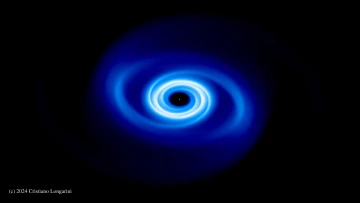Cristiano Longarini, Cambridge University

When
Refreshments served at 3:oo pm in the 3rd Floor Atrium
TAP Planet Formation Initiative Lecture/Colloquium
Cristiano Longarini, Cambridge University
Visit Dates: Sep 28 - Oct 10
Title: The Role of Self-Gravity and Gravitational Instabilities in Protoplanetary Discs

Abstract: Abstract: Protostellar discs are the link between stars and planets: they form with the star, and they are the environments in which planet formation takes place. Thanks to ALMA radio telescope, we are looking into these systems with an incredible level of detail, showing a high degree of complexity in their structure, morphology and kinematics. Many discs exhibit substructures that are consistent with - and often interpreted as - the theoretically expected signature of planet-disc interaction. Under the hypothesis of the planetary interpretation, a robust conclusion is that a substantial part of the planet formation process must overlap with the time when protostellar discs are young, likely to be self-gravitating and, possibly, gravitationally unstable. Hence, a natural question to ask is: what is the role of the disc self-gravity in the context of plant formation?
Bio: Bio: Cristiano Longarini is a postdoctoral researcher at the Institute of Astronomy in Cambridge, where he studies the formation and early evolution of planetary systems. Originally from Italy, he earned his Ph.D. in Astrophysics at the University of Milan, where he focused on gravitational instabilities in protoplanetary discs. During his Ph.D., he was awarded a Fulbright scholarship and spent six months in New York, working at Stony Brook University and the Flatiron Institute. Before joining the Institute of Astronomy, he was involved in the exoALMA large program, contributing to the analysis of ALMA observations of protoplanetary discs kinematics. His research combines numerical simulations and observational data to explore the physical processes driving planet formation. He is also an active contributor to the development and application of the smoothed particle hydrodynamics (SPH) code Phantom.
Links:
Cristiano Longarini's Website
https://www.ast.cam.ac.uk/news/alma-detects-hallmark-wiggle-gravitational-instabilityplanet-forming-disk
https://aasnova.org/2025/05/28/monthly-roundup-a-deep-view-of-planet-forming-diskswith-alma/

